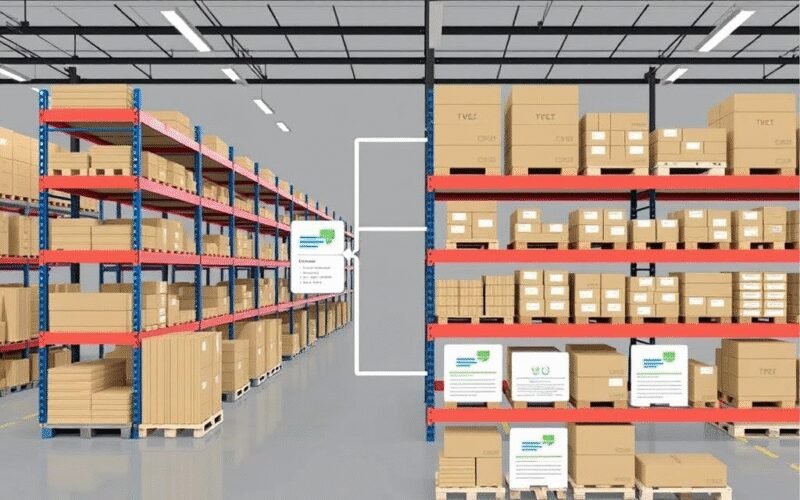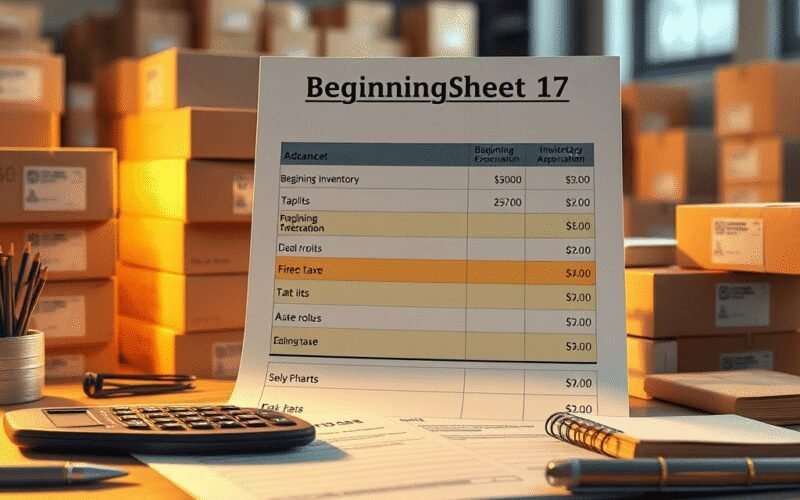A comprehensive guide to the periodic inventory system in accounting. Learn about its definition, advantages, disadvantages, and practical tips to maximize its effectiveness for small businesses with low inventory turnover.
Accounting Periodic Inventory System: A Comprehensive Guide
The periodic inventory system is a traditional method of tracking inventory in accounting, where stock levels are updated at specific intervals—such as monthly, quarterly, or annually—rather than continuously. This system contrasts with the perpetual inventory system, which updates inventory in real-time with every transaction. The periodic system is particularly useful for small businesses or those with limited resources, as it is simpler and less expensive to implement. However, it comes with trade-offs in accuracy and real-time visibility.
This article provides a detailed exploration of the periodic inventory system, covering its definition, how it works, its advantages and disadvantages, and a real-world example. We’ll also offer tips for businesses using this system to maximize its effectiveness.
What Is the Periodic Inventory System?
The periodic inventory system is an accounting method where inventory counts are updated at regular intervals, rather than continuously. Businesses using this system do not track inventory levels after each sale or purchase. Instead, they rely on periodic physical counts—often at the end of an accounting period—to determine the quantity of inventory on hand.
Once the physical count is completed, the business calculates the cost of goods sold (COGS) using the following formula:
COGS = Beginning Inventory + Purchases – Ending Inventory
- Beginning Inventory: The value of inventory at the start of the period.
- Purchases: The cost of inventory bought during the period.
- Ending Inventory: The value of inventory at the end of the period, based on the physical count.
This system is commonly used by small businesses, retailers with low inventory turnover, or companies that deal with inexpensive goods where real-time tracking isn’t critical.
How Does the Periodic Inventory System Work?
In a periodic inventory system, businesses do not maintain a running total of inventory or COGS throughout the accounting period. Instead, they follow these steps:
- Beginning of the Period: The business starts with a known inventory level, recorded as the beginning inventory.
- During the Period: Purchases are recorded in a purchases account, but inventory levels are not updated with each transaction.
- End of the Period: A physical count of inventory is conducted to determine the ending inventory.
- Calculating COGS: Using the formula above, the business calculates COGS by subtracting the ending inventory from the sum of beginning inventory and purchases.
- Updating Financial Records: The ending inventory is recorded, and COGS is used to prepare financial statements.
For example, if a business starts the month with $10,000 in inventory, purchases $5,000 worth of goods, and ends the month with $8,000 in inventory, the COGS would be:
COGS = $10,000 + $5,000 – $8,000 = $7,000 ]
This method is straightforward but lacks the real-time precision of a perpetual system.
Advantages of the Periodic Inventory System
They offers several benefits, especially for small businesses or those with limited resources:
- Simplicity: It’s easy to implement and understand, requiring minimal training.
- Cost-Effective: No need for expensive software or technology, making it budget-friendly.
- Low Maintenance: Businesses don’t need to track inventory continuously, saving time and effort.
- Suitable for Small Operations: Ideal for businesses with low inventory turnover or inexpensive goods.
For businesses with straightforward inventory needs, the periodic system can be an efficient and practical choice.
Disadvantages of the Periodic Inventory System
Despite its simplicity, the periodic inventory system has notable drawbacks:
- Lack of Real-Time Data: Inventory levels are only updated periodically, leading to potential inaccuracies.
- Risk of Stockouts or Overstocking: Without real-time tracking, businesses may run out of stock or hold excess inventory.
- Inventory Shrinkage: Theft, damage, or loss may go unnoticed until the physical count.
- Time-Consuming Physical Counts: Counting inventory manually can be labor-intensive and disruptive.
These limitations make the periodic system less suitable for businesses with high transaction volumes or complex inventory needs.
Real-World Example of the Periodic Inventory System
Consider a small retail shop that sells handmade crafts. The shop owner uses a periodic inventory system because they don’t have the budget for a perpetual system and their inventory turnover is relatively low. Here’s how it works:
- Beginning of the Month: The owner records $5,000 in inventory.
- During the Month: The shop purchases $2,000 worth of materials and sells various items, but doesn’t track each sale’s impact on inventory.
- End of the Month: The owner conducts a physical count, finding $4,500 in inventory.
- Calculating COGS: Using the formula, COGS = $5,000 + $2,000 – $4,500 = $2,500.
This method allows the owner to calculate COGS and adjust purchasing for the next month without the need for sophisticated technology.
Tips for Businesses Using the Periodic Inventory System
If your business uses a periodic inventory system, here are some tips to maximize its effectiveness:
- Conduct Regular Counts: Schedule physical counts frequently to minimize discrepancies.
- Use Technology: Even simple tools like spreadsheets can help organize data and reduce errors.
- Monitor Trends: Track sales patterns to anticipate inventory needs and avoid stockouts.
- Implement Spot Checks: Randomly check inventory between counts to catch shrinkage early.
- Train Staff: Ensure employees understand the importance of accurate record-keeping and counting.
These strategies can help businesses overcome some of the system’s limitations while maintaining its cost-effectiveness.
Periodic vs. Perpetual Inventory System
To fully appreciate the periodic inventory system, it’s helpful to compare it to the perpetual system:
| Feature | Periodic Inventory System | Perpetual Inventory System |
|---|---|---|
| Inventory Updates | At set intervals (e.g., monthly) | Continuously, in real-time |
| Technology Requirement | Minimal (manual or basic tools) | Advanced (software, scanners) |
| Cost | Low | High |
| Accuracy | Lower, prone to errors | Higher, real-time precision |
| Best For | Small businesses, low turnover | Large businesses, high turnover |
While the perpetual system offers greater accuracy, the periodic system remains a viable option for businesses with simpler needs or limited budgets.
Conclusion
The periodic inventory system is a time-tested method for managing inventory, offering simplicity and cost-effectiveness for small businesses or those with low inventory turnover. While it lacks the real-time precision of a perpetual system, it can still be an effective tool when used with regular physical counts and careful monitoring. By understanding its advantages and limitations, businesses can decide if the periodic inventory system is the right fit for their operations. For those just starting out or with straightforward inventory needs, it provides a practical and budget-friendly solution.














Leave a Reply